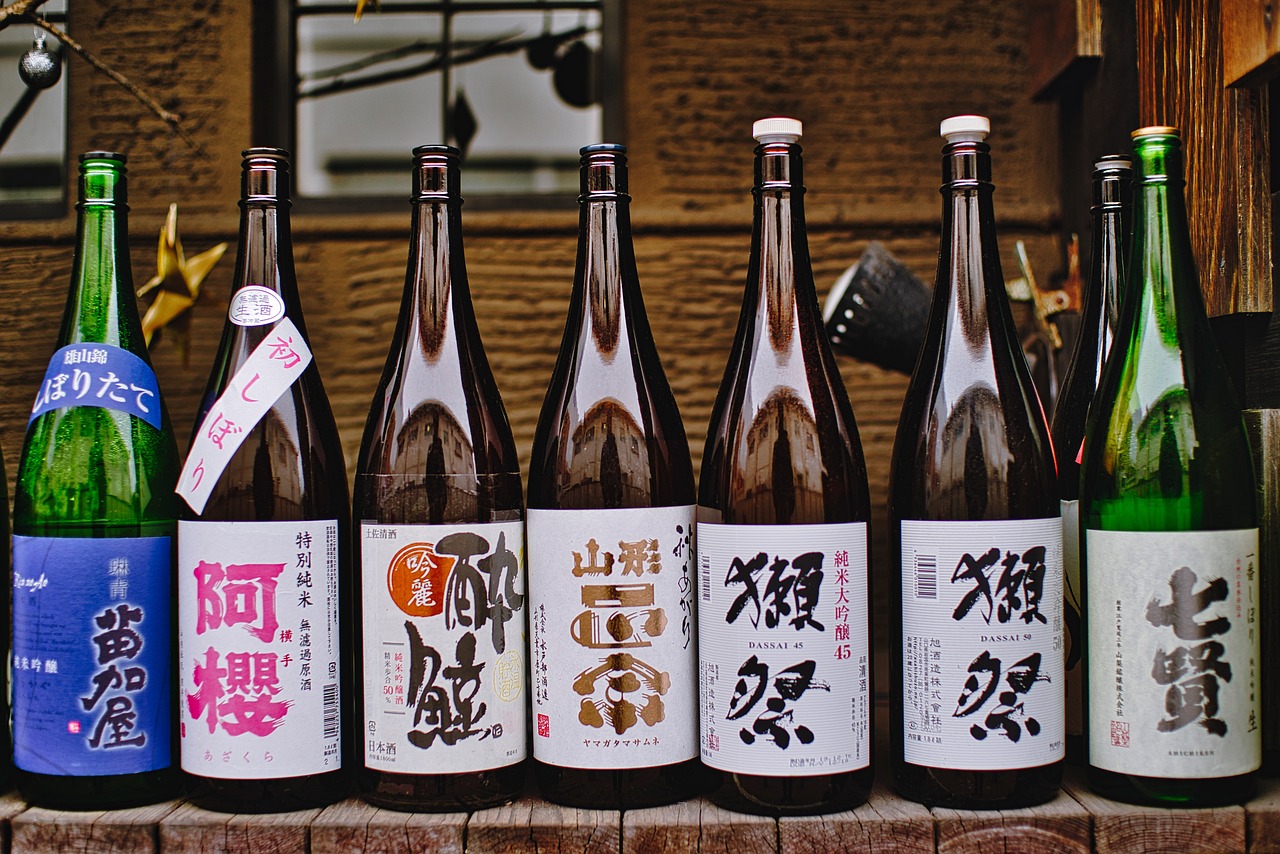“When is the best season to enjoy sake?”
If you’re thinking “winter,” you’re not wrong—but that’s just one part of the story.
The beauty of Japanese sake lies in its seasonal variety, with unique styles released throughout the year.
In this guide, we’ll take you through the seasonal timeline of sake, what makes each period special, and why sake is truly a drink for all four seasons.
- December to March: Shiboritate (Freshly Pressed Sake)
- January to March: High-Grade Sake for Competitions
- March: Haru-zake (Spring Sake)
- June to July: Nomikiri (Tasting from the Tanks)
- June to August: Natsu-zake (Summer Sake)
- July: The Start of a New Brewing Year
- September: Hiyaoroshi & Akiagari (Autumn Aged Sake)
- Why Sake is Delicious All Year Long
- Final Thoughts: Sake is the Taste of the Seasons
December to March: Shiboritate (Freshly Pressed Sake)
This is the prime brewing season for sake, and during this period, you’ll see a surge in bottles labeled “shiboritate,” meaning freshly pressed.
Characteristics:
- Unpasteurized (or only lightly pasteurized), giving it a fresh, vibrant flavor
- Slightly fizzy with a youthful sharpness
- Aromatic and lively, often with fruity or grassy notes
Best enjoyed:
- Served chilled to preserve freshness
- Pairs well with light winter dishes like sashimi or tofu hot pot
January to March: High-Grade Sake for Competitions
Breweries also prepare their most refined sake during this time to enter into prestigious competitions such as the Zenkoku Shinshu Kanpyoukai (National New Sake Appraisal).
Characteristics:
- Made with premium rice like Yamada Nishiki
- Extremely polished (often down to 35% rice polishing ratio)
- Elegant, aromatic, and crystal-clear in flavor
Best enjoyed:
- In a wine glass to fully enjoy the aroma
- Ideal for celebrations or pairing with haute cuisine
March: Haru-zake (Spring Sake)
As cherry blossoms bloom, spring-themed sake with colorful labels and gentle flavors enter the market.
Characteristics:
- Soft, mildly sweet profile with gentle acidity
- Smooth, mellow body with delicate fruitiness
- Meant to evoke the lightness of spring
Best enjoyed:
- With spring vegetables, sakura shrimp, or picnic-style meals
- Perfect for hanami (cherry blossom viewing)
June to July: Nomikiri (Tasting from the Tanks)
Nomikiri is a brewery event in early summer where sake is sampled from storage tanks to monitor its development. Some of these samples may become limited releases.
Characteristics:
- Well-rounded, subtly aged profile
- Mellow and smooth texture
- Rare and sometimes exclusive to sake tasting events
June to August: Natsu-zake (Summer Sake)
Sake for the hot season, known as natsu-zake, is designed to be light, crisp, and refreshing.
Characteristics:
- Lower alcohol content (around 12–13%)
- Bright acidity with a clean finish
- Sometimes slightly sparkling or dry
Best enjoyed:
- Very chilled
- Ideal with summer dishes like cold noodles, tofu, or grilled fish
July: The Start of a New Brewing Year
In the world of sake, the brewery year (BY) begins on July 1st. It’s a behind-the-scenes milestone marking the beginning of the next brewing cycle.
Highlights:
- Planning and rice contracting for the next sake season begins
- Some breweries host events or release special preview sake
- A season full of anticipation for what’s to come
September: Hiyaoroshi & Akiagari (Autumn Aged Sake)
In autumn, you’ll find sake that has been aged over the summer and released without a second pasteurization, allowing it to mellow beautifully.
Characteristics:
- Richer, fuller-bodied flavor with umami
- Smooth and deep, thanks to mild aging
- Perfect with hearty autumn dishes
Best enjoyed:
- At room temperature or gently warmed
- Excellent with mushrooms, grilled fish, or fatty meat
Why Sake is Delicious All Year Long
Unlike many drinks that have one “best season,” sake has distinct styles for each season—that’s the secret to its year-round appeal.
| Season | What to Enjoy | Flavor Profile |
|---|---|---|
| Winter | Shiboritate, New Sake | Fresh, vibrant, bold |
| Spring | Haru-zake, Competition Grade | Elegant, floral, refined |
| Summer | Natsu-zake | Light, crisp, refreshing |
| Autumn | Hiyaoroshi, Akiagari | Aged, mellow, umami-rich |
Plus, sake can be enjoyed at various temperatures—chilled, room temperature, or warmed—unlocking different flavor nuances depending on how it’s served.
Final Thoughts: Sake is the Taste of the Seasons
Japanese sake is more than a drink—it’s a reflection of the seasons. From icy-fresh winter brews to mellow autumn-aged sake, there’s always something new to explore.
Whether you’re sipping sake under cherry blossoms or enjoying it with a hotpot in winter, sake invites you to savor Japan’s seasonal rhythm—one glass at a time.
Cheers to sake, all year long! 🍶



コメント